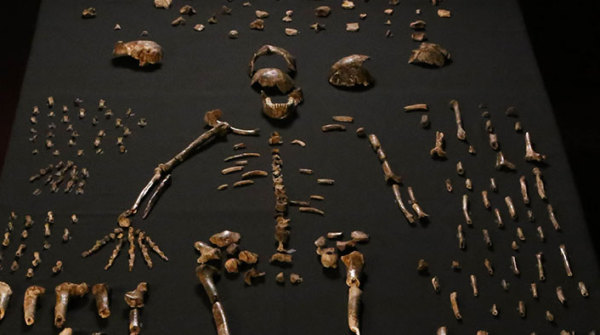
Back when The Fast Red Road wasn’t called that—this is late 1997, early 1998—the way I intended to write it was as a series of long answering machine messages left in this one guy’s trailer while he’s off gallivanting around with a carnival or something (he’s got pet jackals—this is the kind cool stuff you think of, first novel out, that you then don’t get to use until, say, you write a novel about a bunnyheaded zombie coyote/smuggler/father). The guy on the answering machine was supposed to be this guy named Golius, a thinly-veiled Vizenor character, monologging on and on about, you guessed it: hominids. Each message was going to be a different theory about why our primate selves finally stood up. And these messages were going to matter so, so much to Golius, like, they’re the tether just barely keeping him attached to the surface of the planet. They’re not so important to the guy listening. To the guy standing there deleting them.
Fast-forward twenty years and twenty-plus books, and I’m finally starting to publish about hominids, some. There’s “Chapter Six,” from Tor.com:

And now I’ve got a couple from more recent—one today, one a couple months ago.
The first is in a journal that was always one of my targets in grad school, one of my dream places, my somedays. Denver Quarterly. Story’s not online, and it would be kind of rude for me to scan it in—it’s only three pages—but, here’s the first paragraph, anyway, from which you can maybe get the tone or slant or voice or angle of approach & delivery:

My second hominid piece of 2017 is in a relatively new place, but with a name that’s so much older: Uncanny Magazine. They have a good aesthetic, good editing and copyediting, good people—are just generally a solid publication all around. My story out with them as of today is ramping out of the Rising Star fun, that, when I first started hearing about it, so changed my world, and continues to every day, every single thing I read about it.
My story? It’s called, you know: “Rising Star” (tagalong interview).I don’t have the scientific tools or training to explain how those bones got where they got, no. Right now, nobody does. But I can dig in with fiction. It’s the sharpest thing I got.
And, yes, it can’t be too long now until I just sit down and write a novel about all this. I mean, Almost Adam and Neanderthal and The Neanderthal Parallax and Darwin’s Radio proved the audience has a hankering for this kind of stuff. Where it all starts for me, though? With these two books:


And, that Asimov-one, that’s where it start-starts, for me. Lucked into that book when . . . I don’t know, I feel like I was about twelve? It was one of my two bibles (my other: Strange Stories, Amazing Facts). I carried it around for years, even gave it to my mom when I was sixteen, insisting she read it, and then stole it back from her a couple months later. I don’t have that original copy anymore, either. I gave it to Joe Lansdale, who’s the only other writer—only other person—I’ve found as into Neanderthals and hominids and evolution and all this as I am, in my pop-science way. But, of course, I eBayed another—that’s the one I’m holding up there (as for why I gave my prized copy away? that’s what you’re supposed to do, with your favorite things. far as I know, anyway).
Also, I started actually and finally (and scarily) writing my big anthropological thriller three or four years ago, but dove out a hundred or hundred-and-fifty pages in, as I’d somehow forgot to build an antagonist into the story. For me, it was enough just to get talk hominids. Conflict? I didn’t need any stinking conflict. Just more hominids, please. And then also some more after that. But I’m regrouping. I’m going to do this right, just wait and see.
Until the next big bone cache turns up,


 is the NYT bestselling author of 30 or so books, +350 stories, some comic books, and all this stuff here. He lives in Boulder, Colorado, and has a few broken-down old trucks, one PhD, and way too many boots. More
is the NYT bestselling author of 30 or so books, +350 stories, some comic books, and all this stuff here. He lives in Boulder, Colorado, and has a few broken-down old trucks, one PhD, and way too many boots. More